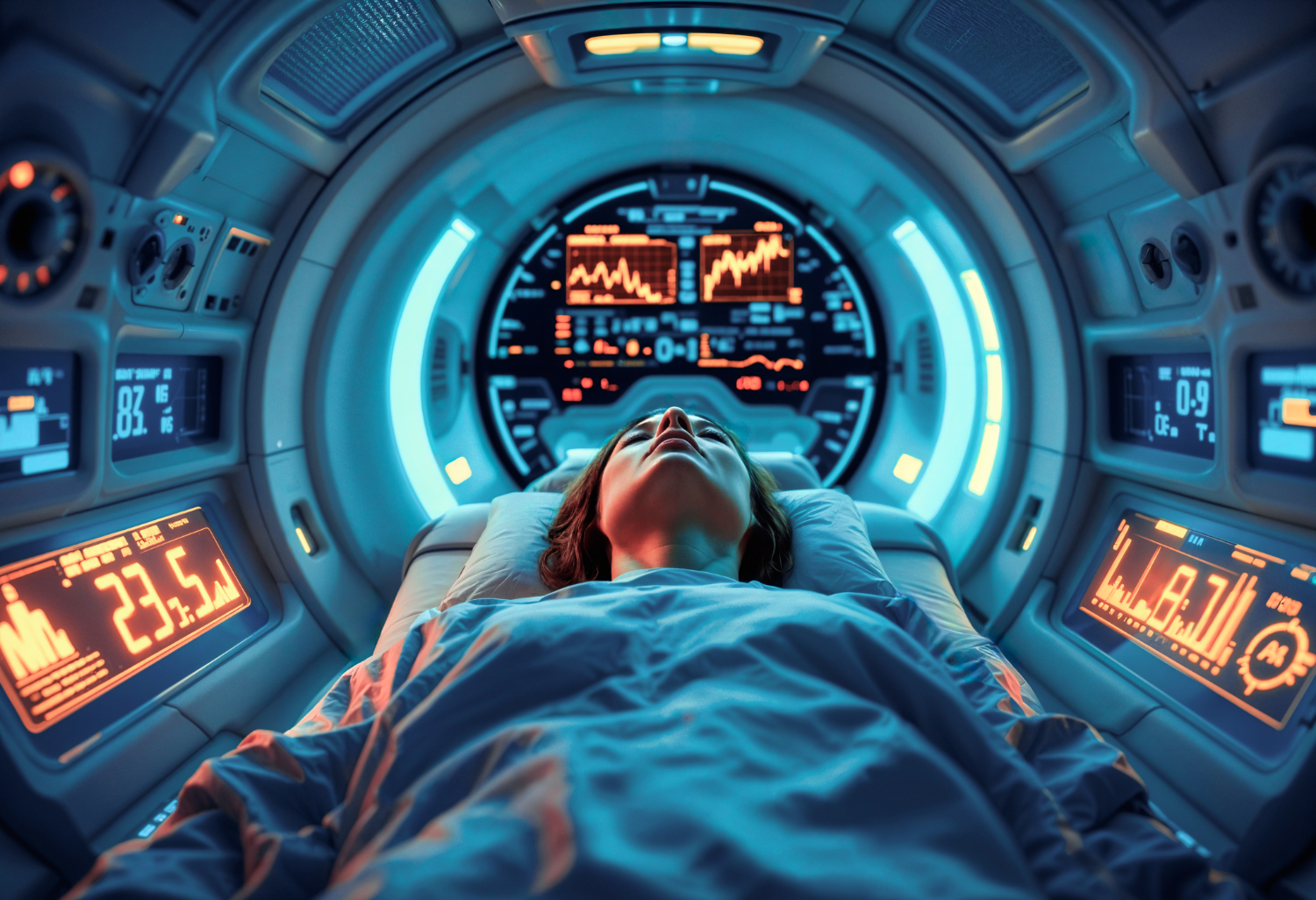
The Critical Link Between RBD and Neurodegenerative Disease
REM sleep behavior disorder (RBD) affects over one million Americans, causing abnormal movements, twitching, and dream enactment episodes during sleep. What makes this condition particularly significant is its strong connection to neurodegenerative diseases – RBD is almost always an early sign of Parkinson’s or dementia, often preceding other symptoms by 10-15 years.
This early manifestation presents an unprecedented opportunity for developing preventative therapies against these devastating conditions. Identifying RBD patients early could revolutionize treatment approaches by targeting those who would benefit most from early intervention.
Why Traditional RBD Diagnosis Falls Short
According to Dr. Emmanuel During, associate professor of neurology at the Icahn School of Medicine at Mount Sinai, diagnosing RBD has been exceptionally challenging.
“A simple screening question on whether people act out their dreams is poorly sensitive because many with RBD rarely have full-blown dream enactment episodes but only small twitches that they or their partners aren’t aware of,” explained Dr. During, who specializes in movement and sleep disorders at The Mount Sinai Integrative Sleep Center.
The limitations extend beyond awareness issues. “These screening questions are also poorly specific because more common conditions – like sleep apnea or restless legs movements during sleep – can cause symptoms mimicking RBD,” During continued.
The Gold Standard Test and Its Limitations
The current gold standard for RBD diagnosis is an in-lab polysomnogram, which measures muscle activity during REM sleep using electromyography. However, even this sophisticated test has significant limitations:
- Results are difficult to interpret and subject to artifacts
- Even sleep experts frequently disagree on diagnoses
- Video recordings from these tests aren’t utilized in standard interpretation
- Most sleep centers discard valuable video data after testing
- The focus on diagnosing sleep apnea means RBD markers are rarely assessed
This diagnostic gap leads to missing “incidental cases” of RBD, which studies suggest occur in at least 1% of the adult population.
Mount Sinai’s Innovative Solution
To address this critical need, Mount Sinai researchers developed a groundbreaking method to automate RBD diagnosis by analyzing video recordings from standard sleep tests.
Their algorithm automatically interprets the frequency and pattern of body movements during REM sleep to determine whether a person has RBD. While a similar approach had been attempted in Austria, that study required specialized 3D camera equipment not commonly available in sleep clinics.
“No study before ours had tested video data routinely collected with the 2D-infrared camera used in all clinical sleep labs worldwide,” During emphasized.
Research Methodology and Data Collection
The research team assembled an extensive dataset comprising:
- 81 sleep study recordings from patients with confirmed RBD
- 91 control recordings from patients without RBD
- 63 with various other sleep disorders
- 28 from healthy sleepers
Using an optical flow computer vision algorithm, they automatically detected movements during REM sleep and extracted five key features:
- Movement rate (frequency)
- Movement ratio (proportion of REM sleep showing movements)
- Movement magnitude
- Movement velocity
- Immobility ratio (distribution pattern of movements)
A machine learning classifier was then trained to differentiate RBD from other conditions and normal sleep patterns.
Remarkable Results and Accuracy
The research confirmed that people with RBD exhibited an increased number of movements during REM sleep, particularly brief movements shorter than 2 seconds, including jerks and twitching.
The accuracy rates were impressive:
- 84.9% using only two features
- 87.2% using all five features
- 91.9% when combining all five features but focusing on movements under 2 seconds
Perhaps most significantly, of the 11 patients with RBD who had no movements noticeable to the human eye during sleep tests, the algorithm correctly identified seven as having RBD.
Future Applications and Implications
“This is the first study showing that a simple algorithm analyzing video recordings acquired during routine sleep tests can diagnose RBD with a very high accuracy of 91.9%,” During noted.
The approach offers several advantages over previous methods:
- Uses standard 2D cameras already in sleep laboratories
- Improves diagnostic performance with just three additional features
- Could be implemented in clinical settings without additional equipment
Looking ahead, During suggests: “Coupled with automated detection of REM sleep, it should also be tested in the home environment, using conventional infrared cameras to detect and monitor RBD.”
This breakthrough could transform early diagnosis of RBD, potentially opening new avenues for early intervention in Parkinson’s disease and dementia, conditions that currently have limited treatment options once symptoms appear.
Discover the latest Provider news updates with a single click. Follow DistilINFO HospitalIT and stay ahead with updates. Join our community today!




Leave a Reply